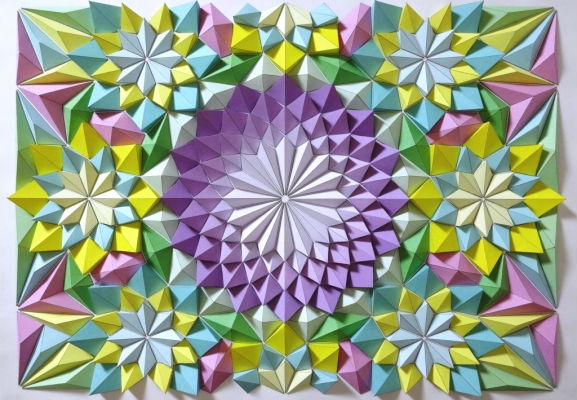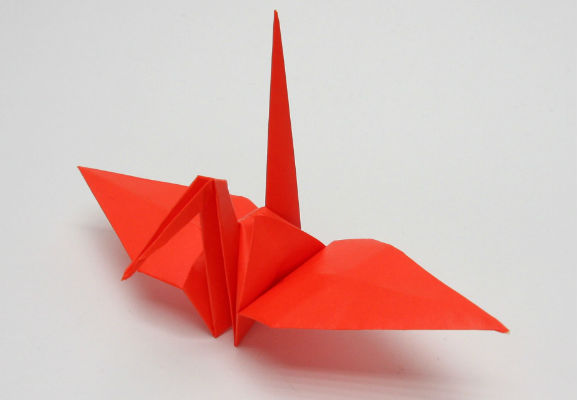Origami
While some people consider it a real art form that is very Zen-like in its simplicity and depth, origami is regarded by many as an activity for children, who are taught just a few standard designs.
Even in Japan, the most complicated design that most people master is the tsuru (crane), which has developed into a worldwide symbol of children’s desire for peace. But origami has a long history and was originally not for children at all.

An elaborate origami pattern

A simple origami tsuru
Like many things in Japanese culture, origami (from “oru” meaning to fold, and “kami” meaning paper) has its origins in China. It is believed that paper was first made, and folded, in China in the first or second century. The earliest records of origami in Japan date to the Heian Period (794-1185). It was during this period that Japan’s nobility had its golden age and it was a time of great artistic and cultural advances. Paper was still a rare enough commodity that origami was a pastime for the elite. Paper was folded into set shapes for ceremonial occasions such as weddings. Serrated strips of white paper were used to mark sacred objects, a custom which can still be seen in every shrine to this day.
It was in the Edo Period (1600-1868) that much of today’s popular traditional culture developed as forms of entertainment for the merchant classes and the common people. Kabuki and ukiyo-e are just two examples and origami also gained popularity. By the mid-19th century, 70 or more different designs had been created. But aside from its ceremonial use, its popularity has been in decline since the Meiji Period (1886-1912) and the modernization of Japan.
Sasaki Sadako
In the mid-1950s, 11-year old Sasaki Sadako developed leukemia as a result of her exposure to radiation as a baby during the atomic bombing of Hiroshima in 1945. Tradition held that if you made a senbazuru (a thousand paper cranes) and made a wish after completing each one, your wish would come true. Sadako set about making the tsuru, wishing for her own recovery. As she continued, she began to wish instead for world peace. One version of the story says that she died when she had made only 644 and her school friends completed the full number and dedicated them to her at her funeral. A perhaps more reliable version says she completed the 1,000 and went on the fold several hundred more before succumbing to the cancer at the age of 12. Regardless of the details, the story helped inspire the Children’s Peace Memorial in Hiroshima and a statue of Sadako in Seattle. Each year on Peace Day(August 6th), tens of thousands of origami tsuru are sent to Hiroshima by children all over the world.

